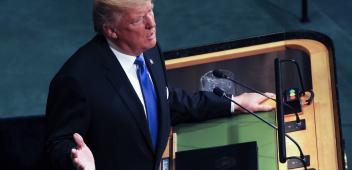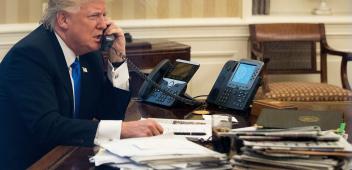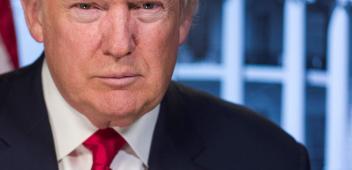US must follow FDR's lead on Asia
Lowy Institute Executive Director Dr Michael Fullilove argues that United States President Barack Obama must follow Franklin D. Roosevelt's lead regarding foreign policy in Asia.

Executive Summary
PRESIDENT Barack Obama's most important foreign policy initiative is his attempt to "pivot" away from the Middle East and towards Asia.
Yet in Asia, some are starting to wonder whether the pivot was last year's story.
The new Secretary of State, John Kerry, is rarely sighted in the region. The military elements of the rebalance are underwhelming. Some of the main proponents of the pivot have left government, and US policymakers are still drawn to the Middle East like iron filings to a magnet.
One reason for the sluggishness of the shift is that it is remarkably difficult to pivot a country as large and diverse as the US.
Arguably, the last successful pivot took place from 1939 to 1941, between the outbreak of fighting in Europe and the US entry into the war after the bombing of Pearl Harbor.
During this period, the US was transformed from a nervous, isolationist, middle power into an outward-looking global leader.
When the Wehrmacht marched into Poland in September 1939, only one in 40 Americans believed the US should declare war on Germany. Flanked by oceans to the east and west and unthreatening neighbours to the north and south, Americans historically were disposed to isolate themselves from conflict and strife abroad.
Congress erected high tariff walls, banned commercial dealings with warring nations and starved the military of funds. GIs drilled with broomsticks rather than machineguns.
The limits on president Franklin D. Roosevelt's freedom of movement at this time were severe, including historical precedent, public anxiety and congressional opposition.
His great achievement was to navigate these constraints and move a divided and hesitant America towards ever greater involvement in the European war.
In 1940, the US rearmed and remobilised. In a deluge of speeches, broadcasts, messages and decisions, FDR pushed isolationism to the margins of American debate and tilted the national mood towards supporting aid to European allies, even at the risk of war.
In 1941, he sent a torrent of lend-lease aid to Britain and its empire and, later, to the Soviet Union.
He also steadily expanded US operations in the Atlantic Ocean until the US was waging an undeclared naval war against Germany.
Between 1939 and 1941, Roosevelt took the US on a long journey. By the time of the surprise attack at Pearl Harbor, the US had lost its isolationist illusions.
Americans were united and ready for the fight. The president had carried the country with him.
But Roosevelt did not undertake this effort single-handedly. He called on five men to act as agents in Europe.
First off the mark was Sumner Welles, a chilly patrician diplomat, later ruined by his sexual misadventures, who was dispatched on a tour of European capitals in the spring of 1940.
In summer of that year, after the fall of France, "Wild Bill" Donovan -- war hero and future spymaster -- visited Britain at the president's behest to determine whether it could hold out against the Nazis.
After he won an unprecedented third term in November 1940, Roosevelt threw a lifeline to Britain in the form of lend-lease and dispatched three men to secure it.
Harry Hopkins, the whirling dervish at the centre of the New Deal and a presidential confidant, explained lend-lease to Winston Churchill.
Averell Harriman, a handsome, ambitious railroad heir, served as FDR's man in London, expediting lend-lease aid and romancing the prime minister's daughter-in-law.
Roosevelt even put to work his rumpled, charismatic Republican opponent in the 1940 presidential election, Wendell Willkie, whose visit lifted British morale and won wary Americans over to the cause.
Finally, in the aftermath of Germany's invasion of the Soviet Union, Hopkins returned to London to confer with Churchill and travelled to Moscow to meet Joseph Stalin.
This final mission gave Roosevelt the confidence to bet on the Soviet Union.
The US pivot from isolationism to leadership in world affairs was achieved by FDR through a campaign of subtle diplomacy, carried off with great flair.
His tactical shifts were ceaseless, yet behind them a clear direction can be discerned. The US turn towards Europe involved supreme presidential concentration and the diversion of resources on a huge scale.
That is what it takes to pivot America.
If Obama hopes to reorient the country away from some of the responsibilities FDR assumed -- including its heavy obligations in the Middle East -- it will require a similar effort.
The President's challenge may not be as urgent or as deadly as Roosevelt's. Plainly, a rising China is in no way analogous to the rise of the Axis regimes. Indeed, a strong and prosperous China is in everyone's interest.
Yet the stakes are high. Without a strong US presence in the Pacific, the region faces strategic uncertainty, power imbalances and the risk of destabilising rivalry.
The President clearly understands that America's future prosperity and security depend on turning towards Asia.
But to achieve that goal he will need to follow Roosevelt's lead, combining meticulous planning with diplomatic elan and adroit public relations.
And he will need to resist the growing pressure to intervene ever more deeply in the Middle East.
"There is a mysterious cycle in human events," Roosevelt said. "To some generations, much is given. Of other generations, much is expected. This generation of Americans has a rendezvous with destiny."
Obama's generation also has a rendezvous to keep.
____________________________
Michael Fullilove is executive director of the Lowy Institute in Sydney and author of Rendezvous with Destiny: How Franklin D. Roosevelt and Five Extraordinary Men Took America into the War and into the World.



